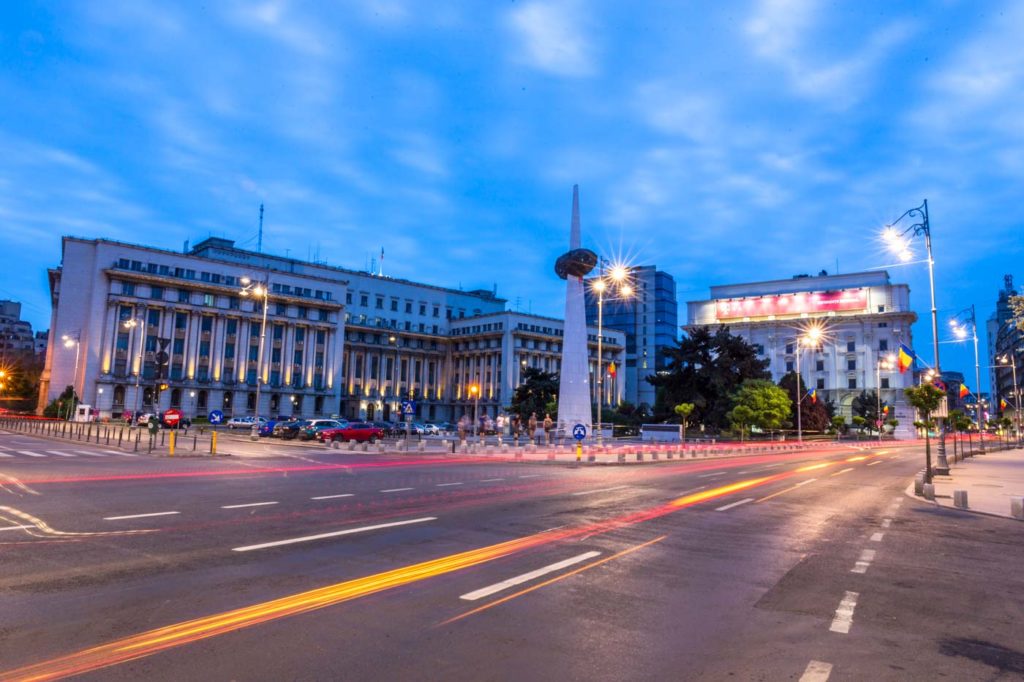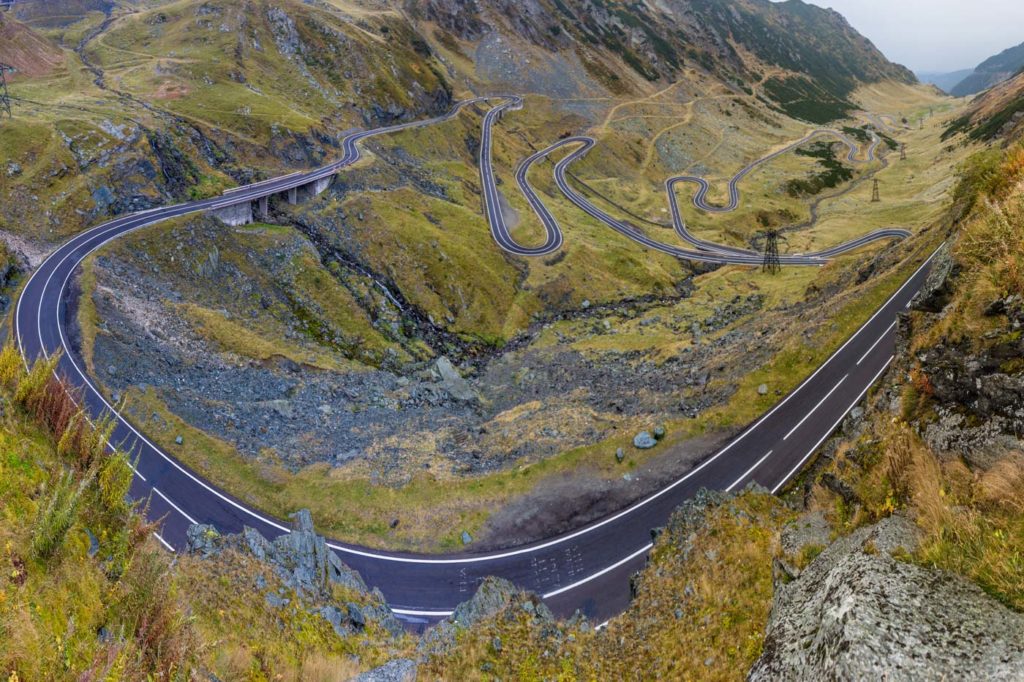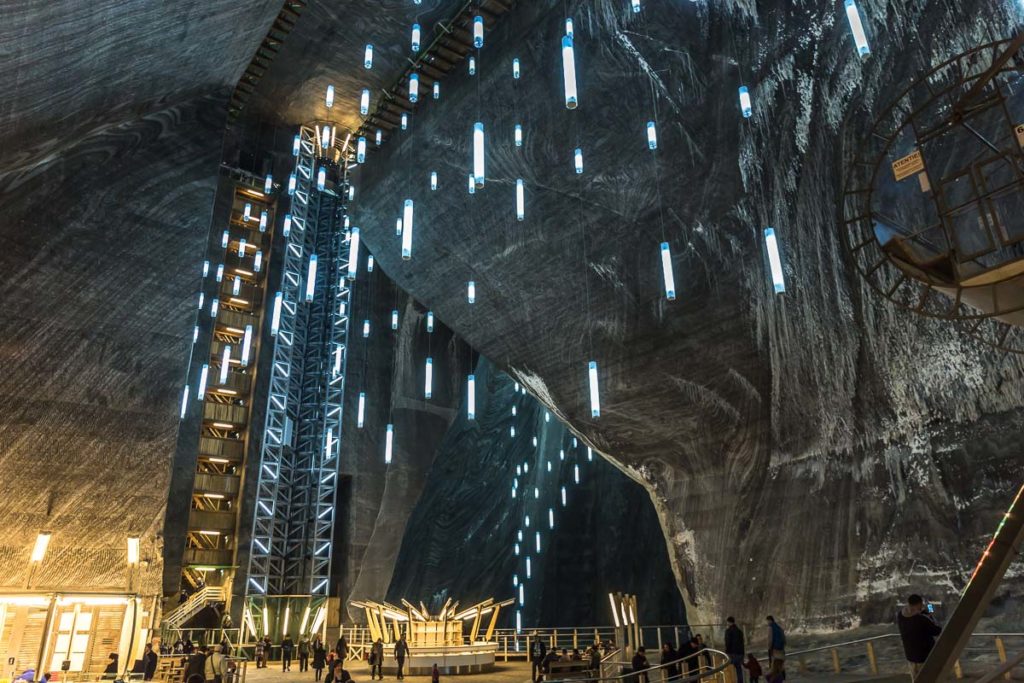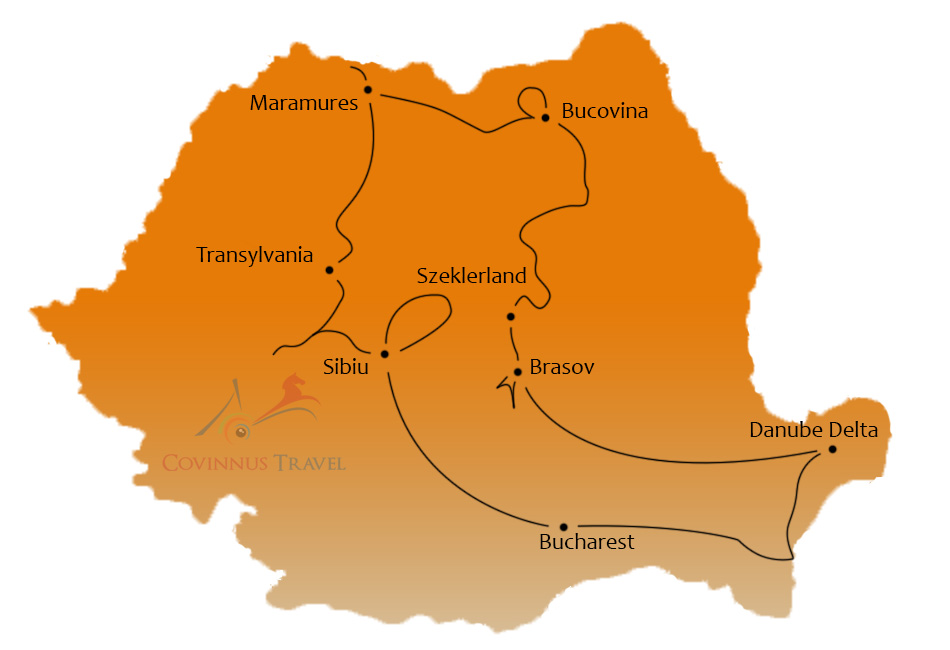
Home / Tours / Private Tours /
Romania in Depth Tour - 15 days
Enjoy a complete tour of Romania
This tour of Romania takes you from the peaks of the Carpathians Mountains to the wetlands of the Danube Delta. It is designed for those who have time for a longer vacation. In 15 days, this private tour of Romania will give the chance of visiting cities like Bucharest or Cluj Napoca, medieval towns of Transylvania such as Sibiu, Sighisoara or Brasov, rural areas from Maramures and Bucovina, Hungarian villages, the castles of Bran and Peles, UNESCO sites and the unique Danube Delta.
Type: private, cultural
Distance: 2995km / 1861mi
Country: Romania
Accommodation: 4-star hotels and superior guesthouses
This tour is private and can be scheduled based on your request. We kindly inform you that some of the sites included in the program might be closed, so we suggest you contact us before booking your flights to Bucharest.
Group of 2-3 persons - €3988/ person sharing a double room
Group of 4-7 persons - €3153 / person sharing a double room
Single Supplement: €400
Highlights of the tour:
Regions
- Wallachia
- Transylvania
- Bucovina
- Moldova
- Dobrogea
Cities
- Bucharest
- Sibiu
- Cluj Napoca
- Piatra Neamt
- Brasov
- Constanta
Major Sights
- The Parliament
- Poenari Citadel
- Transfagarasan Highway
- Vlad Dracul House
- Corvin Castle
- Turda Salt Mine
- Merry Cemetery
- The Steam Train
- Bicaz Gorge
- Bran Castle
- Peles Castle
UNESCO Attractions
- Biertan Fortified Church
- Sighisoara
- The Wooden Churches from Maramures
- The Painted Churches from Bucovina
- Danube Delta
Day 1
BUCHAREST (40min drive)
Arrival in the capital of Romania. You’ll be transferred from the airport to Bucharest. The rest of the day is at your leisure.
Overnight in Bucharest: 4-star hotel
Day 2
FULL-DAY TOUR OF BUCHAREST (1h drive)
After breakfast, a full-day sightseeing tour of Bucharest, including the visit to the famous Parliament Palace, the walking tour includes Revolution Square and the bustling old center of Bucharest. You’ll admire as well The Village Museum and famous boulevards and neighborhoods of this interesting city.
The settlement of Bucharest was first mentioned in 1459, and, ever since, the town went through a series of continuous changes, representing the central scene of Romania’s political, artistic, university, financial and cultural life. Between the two world wars, due to the elegant architecture and to the elite living in Bucharest, the city was nicknamed “The Little Paris.”
During the tour of Bucharest, you’ll stop to visit the Romanian Parliament, the largest administrative building in Europe. The building is located in Bucharest's historical and geographical center, and it was built on a hill. The building, whose works were started in July 1984, includes a huge combination of monumental sculptures, gilded ornaments, decorative flooring, laced ceilings, brocade curtains, heavy carpets, and tapestry, all in a succession of chambers, galleries, lavish vast rooms, and halls. It’s the perfect image of a regime detached from reality, a regime that didn’t care at all about the real needs of the Romanian society.
Located in a green area of Bucharest and inaugurated in 1936, The Village Museum is one of the most beautiful and most interesting museums in the country. It boasts old and original houses brought from different parts of the country. In The Revolution Square, you’ll get the story of the anti-communist revolution from 1989, and you’ll find out more about the hardships an entire nation had to suffer for 45 years. The day ends with what became the most bustling area of Bucharest, The Old Center. Once the place of princely families and nobles, later an area of the craftsmen, the old center became today the Mecca of bars, restaurants, and quaint cobblestone streets.
Overnight in Bucharest: 4-star hotel

Day 3
BUCHAREST – CURTEA DE ARGES – POENARI – SIBIU (5h 30min drive)
In the morning, you’ll set off for Curtea de Arges, the former capital of Wallachia. It is here where you’ll see the famous royal necropolis as all the Romanian kings are buried at the local monastery. Built-in the 16th century at the order of the Black Prince, the monastic complex is an outstanding testimony to the local architectural style. More than that, you’ll be told the legend of Manole, the master of the team who built the church.
Further on, you’ll be taken to the fortress of Poenari*, located in the Transylvanian Alps. Perched on top of a mountain, be careful as there are 1480 steps to be climbed! The citadel was probably built in the 14th century by the first Wallachian princes. Later on, it was modified and extended by Vlad the Impaler, whom we also know as Dracula. In addition to all the stories and legends, the site offers great panoramic views of the mountain on both sides.
The tour continues along the Transfagarasan** highway. As the second-highest road in Romania, the Transfagarasan Highway offers a route to the Carpathian Mountains alpine area. The road is 100km (62mi) from the town of Arefu (Arges County) to Carta (Sibiu County). The highest point – 2042m (6699ft) is reached at Balea Lake. It was built in just four years, between 1970 and 1974, at the order of Nicolae Ceausescu, the last Communist dictator of Romania.
Once you are at the top of the mountain, Transylvania welcomes you. You’ll reach the city of Sibiu in time for dinner.
* Because the Fortress of Poenari is closed for renovation, this place will be seen from outside.
**between October and July, the Transfagarasan road is closed. The road along the Olt Valley will be used as an alternative.
Accommodation in Sibiu: 4-star hotel

Day 4
SIBIU – BIERTAN – SIGHISOARA – SIBIU (3h 30min drive)
Today you’ll enjoy a one-day tour of Transylvania. In the morning, you’ll set off for Sighisoara. On the way, you’ll make a detour for the UNESCO site of Biertan. Located in a beautiful rural area of Transylvania, the castle-church of Biertan is perched on a hill surrounded by old Saxon houses which preserve the medieval atmosphere. You’ll enjoy a tour of the fortress and church, where you’ll learn the history of this place as well as hear some funny stories.
Sighisoara, another UNESCO site in Transylvania, is the next stop on your trip. Built by the Germans about 800 years ago, the medieval citadel of Sighisoara looks like a perfect postcard. It is the best-preserved citadel in Romania, a stunning combination of cobblestone streets, medieval walls, massive watchtowers, and old architecture. Add to these the House of Vlad Dracul, allegedly the birthplace of Dracula. You’ll visit the Clock Tower, the symbol of Sighisoara, and the Church on the Hill, one of the oldest buildings of the citadel.
In the afternoon, you’ll return to Sibiu. On the way, you’ll pass through a Gypsy village where you’ll find out more about the history of this minority. The rest of the day is at your leisure.
Accommodation in Sibiu: 3-star hotel

Day 5
SIBIU – HUNEDOARA – ALBA IULIA (2h 30min drive)
After breakfast, you will enjoy a walking tour of Sibiu. Hermanstadt, to use its German name, was founded by the Saxon colonists about 800 years ago. In a short time, Sibiu became one of the most important cities of Transylvania. Sibiu boasts several medieval squares, including the Great Square (Piata Mare), which is the largest in Romania. It is surrounded by old houses, impressive palaces such as the Brukenthal Palace, and religious constructions, including the Catholic Cathedral. The tour of Sibiu continues with the other squares, the oldest cobblestone streets, and you’ll find out more about the legend which surrounds the Bridge of Lies. The tour of Sibiu ends with the Evangelical Cathedral and the former medieval towers.
Further on, you’ll be taken to Hunedoara, where you’ll visit the largest Gothic castle in Transylvania. Built-in the 14th-15th centuries, the castle belonged to the ancestors of King Corvinus, the Hungarian king who lived in the 15th century. It is here that Vlad the Impaler was imprisoned on his way to Budapest.
In the afternoon, you’ll get to see the biggest and the best-preserved Vauban-like citadel in Romania. Built at the beginning of the 18th century, the citadel of Alba Iulia has been restored recently to its once former glory. Besides the two cathedrals, the Orthodox and the Catholic ones, you’ll be shown the intricate gates of the citadel, the 3rd gate being the most impressive. The old Roman castrum and the medieval citadel known as Balgrad are now integrated into the Austrian citadel. Their ruins are part of the tour.
The day ends with a tour of the remote Hungarian villages. Admire the local architecture, the beautiful landscape, meet the locals and, if you are in the mood, take a short and easy hike to the ruins of a former fortification built in the 13th century.
Accommodation in Transylvanian village: superior estate, rooms with private bathroom

Day 6
ALBA IULIA – TURDA – CLUJ NAPOCA – MARAMURES (4h 30min drive)
The tour of Romania continues in Turda. Here you’ll visit the local salt mine, one of the best in Europe. The Romans were the first to exploit the salt deposits in Turda, but they had to stop because of their lack of technology. Much later, the Austrians reopened the salt mines, which remained active until just before the Second World War. Recently renovated, Turda’s salt mine has become one of the most famous tourist attractions of the country, a must for every tourist.
Before lunch, you’ll arrive in Cluj Napoca, the largest and most developed city in Transylvania. Cluj Napoca is one of the oldest settlements in the country. Although the town has been inhabited since pre-Roman times, it was incorporated as a city for the first time only in 1213. You’ll take a stroll around the streets, and you’ll admire the most important squares and the architecture of the old town.
The tour of Romania takes you now to a new region of the country. Maramures is known for its wooden churches, several UNESCO sites, hospitable people, unspoiled rural areas, great food, and colorful traditional costumes.
You will head to the village of Surdesti, where you will see the first wooden church from this trip. This UNESCO site boasts the purity of the locals’ faith, their outstanding talent for building wooden constructions, and a great modesty level through its traditional simplicity.
In the afternoon, you’ll arrive in the village where you’ll meet a lovely local family. Prepare yourself for tasty homemade meals and lots of tzuica, the local (and very strong!) plum brandy.
Accommodation in Maramures: traditional guest house, rooms with private bathroom

Day 7
MARAMURES DAY-TRIP (2h20min drive)
The tour of Maramures starts with Sighetu Marmatiei, a town on the border with Ukraine, a former Jewish center, and the birthplace of Elie Wiesel.
The next stop will be at the Memorial to the Victims of Communism, a former political prison where thousands of innocent people were imprisoned because they dared to disagree with the communist regime. You’ll visit the former cells, now transformed into rooms dedicated to various subjects such as the Cold War, the collectivization, the suppression of the church, etc. Before leaving the Memorial, you’ll take a stroll in the backyard of the prison, where you can admire two monuments dedicated to those who perished.
Probably the most famous tourist attraction in Maramures is the Merry Cemetery. The story started in the 1930s when a local traditional woodcarver decided to carve crosses representing the dead during their lifetimes. Epitaphs were added to the beautifully carved crosses. Some of them are funny, others quite tragic, but they are painted in bright colors.
In the morning, we’ll continue our tour in Barsana, a village located along the Iza River. Here you will meet one of the most charismatic craftsmen in Romania. A master woodcarver will show you the wide range of his works, from traditional spoons to traditional wooden houses and gates.
Barsana Convent is a monastic center consisting of a tall wooden church with beautiful frescoes, several wooden buildings, a true testimony of the local architecture, and a beautiful garden. To these attractions add a beautiful view over the village and the surrounding hills.
In the afternoon, you’ll discover the hidden gems of the local villages. Every tour of Maramures should include a visit to a local distillery where the locals make their famous strong tzuica. Maramures boasts many traditional washing wooden installations located along the rivers. Even today, the people of Maramures still come to wash their carpets as they did hundreds of years ago.
Accommodation in Maramures: traditional guest house, rooms with private bathroom

Day 8
MARAMURES – BUCOVINA (5h drive)
Maramures is not just a rural area. It also boasts some of the most beautiful mountains in Romania. This area is known for its dense forests, which were exploited for centuries. If some years ago, the locals were using the rivers to get the logs out of the forest; with technology development, they started to use the steam trains.
On the Vaser Valley, you’ll enjoy a ride with a steam train. Built-in 1932, the narrow-gauge railroad offers a stunning experience. You’ll pick up the steam train in the morning, and for hours, you’ll admire the scenic ride. In the first part, you’ll pass through the local village, and then you’ll admire the beauty of nature. You’ll stop in a meadow where you’ll get your lunch, and then you’ll head back to the village.
Driving through the beautiful green slopes of the Carpathian Mountains, you’ll reach Bucovina, one of the historical regions of Romania. Before dinner, you’ll visit a local private museum where you’ll find out more about the painted Easter eggs' craft.
Accommodation in Bucovina: 4-star boutique hotel

Day 9
BUCOVINA DAY-TRIP (2h30min drive)
In the first part of the day, you’ll visit the Museum of the Local Traditions. It’s time to understand the beliefs of the locals, their faith, superstitions, traditions, and customs.
The tour of Bucovina includes several painted churches, all of them being UNESCO sites. You’ll start with the convent in Moldovita. You’ll receive explanations about the frescoes and why they were painted on the exterior walls more than 400 years ago.
The journey takes you through the gentle mountains of Bucovina. You’ll reach Sucevita, known for its stunning painted church, the most impressive and the best preserved of all the painted churches. This religious complex, which looks more like a fortress, is set in a beautiful valley surrounded by green mountains.
Marginea is known as an important ceramic center in Romania. Only here you’ll be able to admire the famous black ceramic. Get to visit the local craftsmen, admire their talent and beautiful products.
The last visit of the day will be to the Voronet convent. Erected in 1488, Voronet Monastery represented one of the first Moldavian creative elements showing a distinctive style. The church is a combination of Byzantine, Gothic and local elements. The exterior painting on the western wall depicts, on five registers, the Last Judgement scene, unique in the whole world. The Voronet Monastery entered the universal cultural heritage for having in the composition of the paintings the inimitable “Voronet blue.”
Accommodation in Bucovina: 4-star boutique hotel

Day 10
BUCOVINA – BICAZ – SZEKLERLAND (5h40min drive)
Today the journey is long but impressive.
You will leave behind Bucovina entering again into Transylvania. It is here where you’ll be astonished by the wonders of nature. The Bicaz Gorge and Red Lake are among the most known landmarks of Romania.
Then you’ll be taken to the core of the Hungarian minority that lives in an area known as Szeklerland. It is here where you’ll be able to admire the traditional way of living of these people and their amazing old houses.
You’ll stay in the manor house. Prepare yourself to step back in time…
Overnight in Szeklerland: superior estate

Day 11
SZEKLERLAND – PREJMER – BRASOV (1h30min drive)
The area known as Szeklerland is one of the best-preserved Hungarian regions in Transylvania. In the morning, you’ll walk the village roads, you’ll observe regular daily life, the cows being taken to the pastures, and visit the main local attractions.
On the way to Brasov, you’ll make a detour to Prejmer*, a fine example of the German fortresses built 800 years ago. The UNESCO site of Prejmer boasts the best-preserved fortified church in Transylvania. The church, the oldest building, is surrounded by more than 270 rooms, and it boasts massive walls and towers.
Further on, you’ll be transferred to Brasov, another former Saxon town. Founded 700 years ago, Brasov became an important trading town, thanks to its geography. The German architecture is still visible. You’ll roam around the old town admiring the central square, the pedestrian alleys, the great architecture, the famous Black Church,** and the narrowest street in all of Romania.
* Between November and April, the Prejmer fortified church is closed on Sundays and Mondays. It can be replaced with the Harman fortified church.
** During the cold months, between November and April, the Black Church will be seen only from outside.
Accommodation in Brasov: 4-star hotel

Day 12
BRASOV – BRAN – SINAIA – BRASOV (3h drive)
The famous castle of Bran is the most visited tourist landmark in Romania. Built about 800 years ago when Hungarian kings controlled Transylvania, the castle became a major attraction in the ’60s when it became known as “Dracula’s Castle.” You’ll get to admire its beautiful rooms renovated by Queen Marie of Romania, and you’ll be told the story of Dracula.
You’ll continue with a stroll on the roads of a mountain village, and you’ll get to know the real life of a Transylvanian village. You’ll admire the landscape, the traditional houses and courtyards, and the farm animals.
In Sinaia, located at the foothills of the Carpathians, you’ll visit the local monastery, the oldest building in the town. Further on, you’ll be literally overwhelmed by the splendor of Peles Castle*(ground floor exhibition). Built by Carol I, the first king of Romania, Peles Castle is considered one of the most beautiful castles in Europe. The unique architecture and exquisite interiors are matched only by the beauty of the Carpathian Mountains.
* Peles Castle is closed on Mondays. Rasnov fortress or the Cantacuzino Castle in Busteni may be used as alternatives.
Accommodation in Brasov: 4-star hotel

Day 13
BRASOV – BRAILA – DANUBE DELTA (7h drive)
It’s time to leave Transylvania behind and depart to the historical region of Dobrogea. On the way, you’ll take a detour to visit the Muddy Volcanoes. It’s a peculiar visit, almost like you are on the surface of the Moon. This area consists of several muddy craters, many of them being active. Don’t worry; there is no danger, as these active craters are harmless. They spit just gases and sticky mud.
No tour of Romania would be complete without a visit to the Danube Delta. Today you’ll first be transferred to Dobrogea, one of the several historical regions of Romania. Then in Braila, you’ll see for the first time the mighty Danube River, which will be crossed by ferry.
On the way to the Danube Delta, you’ll stop for an enjoyable wine-tasting experience (subject of availability). In the afternoon, you’ll arrive at the villages of the Delta, where you’ll stay for one night.
Accommodation in Danube Delta: 4-star hotel

Day 14
DANUBE DELTA – CONSTANTA – BUCHAREST (4h40min drive)
In the morning, you’ll take a private boat for a tour of the Danube Delta. The Danube River, the second-longest European River after the Volga River, changed both the history and geography of the European continent. Napoleon called it “the king of all rivers.”
The three branches of the Danube Delta from the last European nature sanctuary and the largest marshland on the continent. The Delta boasts the largest bed of reeds globally, which act as a purifier and thus make the local water drinkable. The total area of the delta amounts to 58000 ha (143321 acres) and consists of lakes, virgin forests, natural and human-made channels, and the occasional village. There is no better European destination for bird watching, given that the Delta hosts more than 320 species of birds, including pelicans, ibises, egrets, and cormorants. There are 45 species of fish, catfish, and pike perch being the most common. During the four-hour boat ride, you’ll have time to admire all these wonders of nature.
After lunch, you’ll be transferred back to Constanta, the largest seaport at the Black Sea. At the same time, Constanta is the oldest city in Romania with a 3000-year-old history. Although the last years were tough with this city, you can still enjoy a short walking tour in the old part. You can admire the statue of Ovid, the Roman poet exiled here by the Emperor, the local Mosque, and the famous Casino.
In the afternoon you’ll arrive back in Bucharest, where the tour of Romania ends.
Accommodation in Bucharest: 4-star hotel

Day 15
BUCHAREST – OTOPENI AIRPORT (40min drive)
You’ll be transferred to the airport according to your flight schedule.
End of the tour
Price
Group of 2-3 persons - €3989/ person sharing a double room
Group of 4-7 persons - €3153 / person sharing a double room
Single Supplement: €400
Included:
- Airport/hotel pick-up and drop-off
- Transport by modern car
- Accommodation as per program
- Breakfast for each morning
- Two dinners in Maramures and one picnic lunch
- Licensed English-speaking tour guide/driver
- Entrance fees to sites included in the program
- All taxes, parking fees
Not Included:
- Flight ticket
- Hotel extras (telephone, mini bar, etc)
- Other meals except for those mentioned
- Photographing or filming fees at the visited sites
- Tips
- Travel insurance
- Personal expenses




